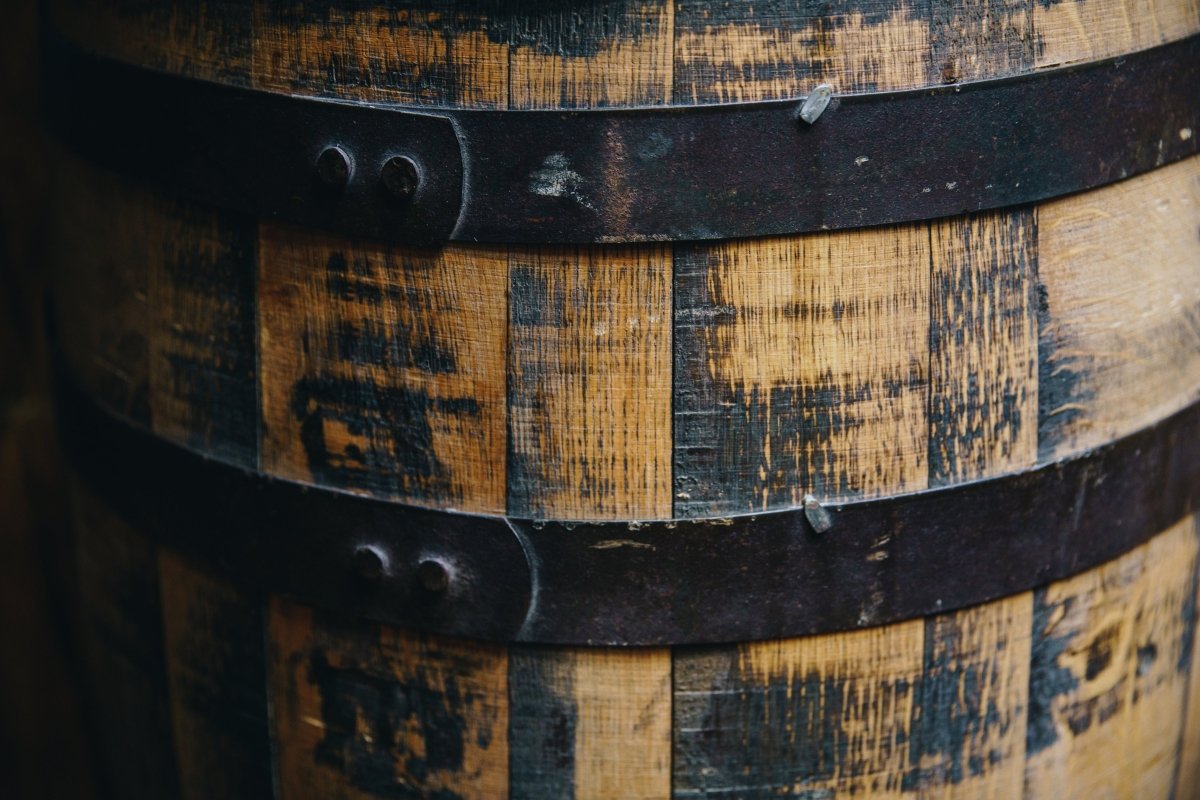-
Shop Beer
-
Shop Merchandise
-
Blog
-
Find Us
-
About
Your cart is empty
Looks like you haven't added anything to your cart yet

All About Brett the Brewer
Most of us in the beer community have at least one friend who just can’t seem to get enough of barnyard, horse-blanket, and leather funk. (Many of us are that friend, perpetually confused by the haters; hi there).
What are we talking about? Brettanomyces of course! Also known simply as ‘brett’, this mercurial microorganism can clear out or fill a room of craft enthusiasts like nothing else. There are plenty of fans and detractors on both sides of the fence.
Both partisans have their reasons. But any rational person wants to hear both sides of an argument before falling in line, right?
In this article, we’ll go over the good, the bad, and ugly sides of this polarising single-celled organism.
What is Brettanomyces?
You may remember that we covered Saccharomyces cerevisiae and S. Pastorianus in our blog post, Yeast- The Heart of Brewing. We have a confession for you: we didn’t tell the whole story. You see, Brettanomyces is a closely related cousin of our much-loved brewing yeast. And as we will see later, it is also an integral part of brewing history.
Looking to forge its own path, brettanomyces took an evolutionary turn away from S. cerevisiae about 200 million years ago. The latter has been selectively bred by humans to become a workhorse in the production of bread and beer. But our enigmatic wild yeast had to find a different path.
What’s in the Name?
Brett was first isolated by the Klinkin Brewery in St. Petersburg in 1889 from an English beer. At the time, beers from the island were known for having an ‘English” character. The genus name Brettanomyces is translated from Greek as ‘British Fungus.’
What the early discoverers of brett didn’t know at the time was that it wasn’t specific to Britain only. Brett can be found in the wild all over the planet. When this fungus is spore-forming, it is commonly referred to as Dekkera in science literature.
More than a decade later its initial discovery, in 1904, N. Hjelte Claussen was able to identify brett while helping the Carlsberg brewery with patenting the first microorganism in the history of intellectual property.
The five main species that live within the genus are the following:
- anomalous
- bruxellensis
- intermedius
- lambicus
- custersianus
- nanus
- naardenensis
While previously thought to be different species, B. intermedius and B. Lambicus are now identified as B. anomalous. The first three, B. anomalous, B. Bruxellensis, and B custersianus, have all been isolated in beer.
Characteristics of Brett

Photo of Wyeast 5112 B. Bruxellensis from the Brettanomyces Project
Under a microscope, sacch and brett may appear indistinguishable in shape and size as ovoid and long sausage-shaped cells. Brettanomyces was forced to survive out in the wild. Like its cousin, it independently evolved the ability to produce ethanol. A deeper look by way of polymerase chain reaction (PCR) identification reveals critical differences.
SurvivabilityBrett has developed many genetic mutations that make it robust. It can survive in much harsher conditions than typical brewing (or wine-making) yeasts. Brettanomyces is highly alcohol- and acid-tolerant as well as able to ferment in a much wider temperature range than most sacch strains.
Brett can also metabolise a much broader range of compounds. These include carbohydrates like fructose, sucrose, maltose, galactose (present in lactose) and cellobiose (wood sugar). It can also survive in very low nitrogen conditions when compared to Saccharomyces.
In the wild, brett is thought to mainly be found on fruit and disseminated by fruit flies. More modern research has been discovering that brett can turn up just about anywhere, including in industrial and urban settings.
Biofilms
Some of Kendon’s tasty looking pellicles while homebrewing–don’t worry these were intentional!
It can be found in the surrounding air, or on just about any surface due to its ability to form a resilient biofilm on non-organic services. Also unique when compared to traditional brewing yeasts is brett’s ability to form a thin biofilm on the surface of a beer. This film is made up of cells, proteins, and polymers. This type of biofilm is called a pellicle.
The pellicle is still one of the many unknowns about Brettanomyces. The main theories are that it either helps microorganisms like brett utilise the oxygen in the headspace or protect the liquid environment from said oxygen.
This adaptability to survive makes brett very hard to contain in places like a winery or brewhouse; which can be good or bad depending on how you look at it.
History in Brewing
During its time of discovery, Brettanomyces was thought to be the hidden component in many British ales. These included popular beer styles of the time such as stock ales, pale ales, porters and barrel-aged IPAs that were sent to India. Never forget, the original IPA was likely stale/oxidised and loaded with notes of farmyard animals. In other words, these IPAs weren’t made to ‘drink fresh’.
Since being isolated and identified, this wild yeast has become the bane of existence for many producers of beer and wine; however, to this day there are exceptions. Some modern natural wine producers like a small amount of brett to add an ‘ageing’ effect to young wines.
Before we had the discovery of yeast by the likes of Louis Pasteur and others, beer all over the world would have been ‘contaminated’ with wild yeasts including brett. It’s safe to assume that pre-nineteenth century beer drinkers would have been very familiar with the full sensory spectrum produced by brett.

Ancient bottles at Brasserie-Brouwerij Cantillon in Brussels
In the past century, Brettanomyces has been a mainstay in many traditional Belgian beer styles: lambics such as Gueuze, farmhouse ales, Saisons, Oud Bruin and Flanders red ales. Breweries like Cantillon, Drie Fonteinen, Boon, and Rodenbach all produce world-class beer that contains brett (sounds like a short-list of the best breweries in the world).
Also, we can’t forget the legendary Trappiste brewery Orval which has famously been adding brett to their beer for refermentation in the bottle. This adds a separate layer of complexity that develops with age; it has spawned many copycats in recent decades.
These breweries have been making beer with traditional methods since before most of us were born. Brett, among other things, is ubiquitous in their brewing environments. Often, they do their best to encourage its presence although not much effort is needed.
Brett lives in the oak barrels and other wooden vessels that these breweries use to store and aged beer. That’s right, viable Brett has been isolated from barrel staves as deep as 4-8mm depending on what type of oak. This means wort can be added to barrels without any added yeast and the brett contained in the wood will slowly get to work!
Brett: Off-flavours or On-flavours?
Brettanomyces can add a wide range of flavours and aromas to beer and wine. Many of these are quite unique; especially when compared to what is possible with traditionally pitched yeasts. But as we mentioned earlier, this controversial fungus is notorious for the off-flavours and off-aromas it can produce in alcoholic beverages.
As we always say, taste is in the eye of the beholder. Now lay behold these ‘delicious’ compounds (from Wikipedia):
- 4-ethylphenol: Band-aids, barnyard, horse stable, antiseptic
- 4-ethylguaiacol: Bacon, spice, cloves, smoky
- isovaleric acid: Sweaty saddle, cheese, rancidity
These compounds have varying thresholds and the character produced depends on the amount present in solution. We know most of you are getting thirsty (and hungry...) after reading through that list.
If wet dogs, leather tanneries, and zoos aren’t exactly your cup of tea, we’ve got some good news for you! Brettanomyces can also produce an expanse of fruity/ funky esters, spicy phenols, and slightly tart acids.
Esters
The primary driver of the hazy and not bitter IPAs of today is none other than esters. Perhaps in the not too distant and dystopian future, beer hipsters will be able to dissolve and sprinkle ester compounds onto food and drink until their heart’s content. Brett can create other esters from hops in a process called biotransformation; we’ll save that topic for a rainy day (we know that’s pretty much every day).
These compounds can range from the isoamyl acetate (banana) of hefeweizens to the general fruitiness (ethyl acetate) of English ales. Like Saccharomyces, brett produces a load of diverse esters from ethanol and fatty acids. In other words, alcoholic fermentation is the perfect opportunity for this yeast to display its full arsenal.
Phenols
Brettanomyces is POF+ (phenolic off-flavour) unlike many S. cerevisiae strains. It’s funny how the production of phenols is labelled as an off-flavour, but this convention is gradually waning. The character of phenols can go from pepper/ spice to tasting like things no human should ever put into their body.
Brewer’s malt contributes nearly three-fourths of phenols and phenol-precursors found in beer. Depending on factors like pitch rate, temperature, and available fermentables, brett creates lower or higher levels of the phenols with love and hate. This is where brett can make or completely break a beer.
Acids
Many of the most well-known bretted beers today are also tart and acidic. Many times, this is because these beers have been co-pitched or spontaneously fermented with anaerobic bacteria. Lactobacillus and Pedioccus will produce lashing of lactic acid (the same thing that makes Greek yoghurt sour).
Brett not only thrives in low pH environments, but it can produce its own acid. Contingent on access to oxygen, Brettanoymyces will produce acetic acid. This is the same acid found in vinegar that is produced by Acetobacter. When you’ve had a sour pint of traditional cask beer, this is the likely culprit. Like many things, a little can go a long way.
Brett in Modern Brewing
Today, brett isn’t seen as only usable for traditional British and Belgian beer styles. In fact, the Beer Judge Certification Programme (BJCP) has continuously evolved several beer styles for new and historical beers that contain Brettanomyces.
Recently, many strains of brett have been isolated and banked by companies such as White Labs, The Yeast Bay, and Escarpment Laboratories to name a few. While plenty of the musty and funky characteristics have been kept alive, it’s big fruity esters that are on the rise! Many strains of brett are putting out flavours like pineapple, mango and other tropical fruits.
As usual, homebrewers have led the way in creating big, juicy and refreshing pales, NEIPAs, Saisons, tropical stouts, Kveiks, sours and other beer styles. They incorporated brett into these styles by co-pitching with sacch at primary fermentation, adding to secondary fermentation, or replacing the primary yeast with brett.
Primary-fermented brett beers are probably one of the more interesting areas for brewers to keep explorers. Like the more recent arrival of kveik, brett on its own can completely subvert the expectations of a drinker. 100% brett beers like The Lost Abbey’s Mo Betta Bretta and Russian River’s Sanctification have become legendary in their own right; however, there is still plenty of room to explore in the undiscovered country that is Brettanomyces.
The Jury is Still Out…
Brett presents many pros and cons for those of us brewers and drinkers alike.
|
Brettanomyces Traits |
Pros |
Cons |
|
Name |
‘British’ is in the name |
So is ‘fungus’ |
|
Adaptable to the environment |
Low-maintenance for yeast management/ yeast health; even if you screw up your brew day, ‘life will find a way’ |
Can easily spread to the external environment and infect a brewhouse or homebrewing equipment |
|
Unique Flavours/ Aromas |
Great for innovation and experimentation |
Easy to go get runaway compound production that completely ruins a beer |
|
Homebrewing |
You will stand out in your club as real specialist and authority figure on brett |
You will infect your clubmate’s home breweries; the club won’t be able to submit to clean categories for the next NHC |
|
It’s Funky |
Pro-funkers will love it! |
Anti-funkers will hate it! |
Experiment and Revive Your Taste Buds!
Who are we kidding, even if it doesn’t always work well in a beer, brett is fantastic! After all, beer isn't supposed to be about having fun? If you don’t like to dabble with a little brett-magic every now and then, that’s your prerogative. But don’t get all hot and bothered if other people continue to make and drink everything brett and brett-related.
At SiWC, we applaud all types of innovation and experimentation in beer. We also encourage inclusivity and diversity. Who is any of us to tell people what they can and can’t do in beer? That’s the beauty of it; with brewing, you are only limited by your imagination.
As for us, we imagine a world where drinking low- and no-alcohol beverages is just as pleasurable and fulfilling as the full-fat stuff. Right now, just the word ‘brett’ scares the shit out of us but that’s because of the sanitation and hygiene complications with no/low brewing
Who knows, maybe brett will unlock something new for us down the road? It could do the same for you. At least think about expanding your experience the next time you order a beer or get ready for your next homebrew.
- Choosing a selection results in a full page refresh.


